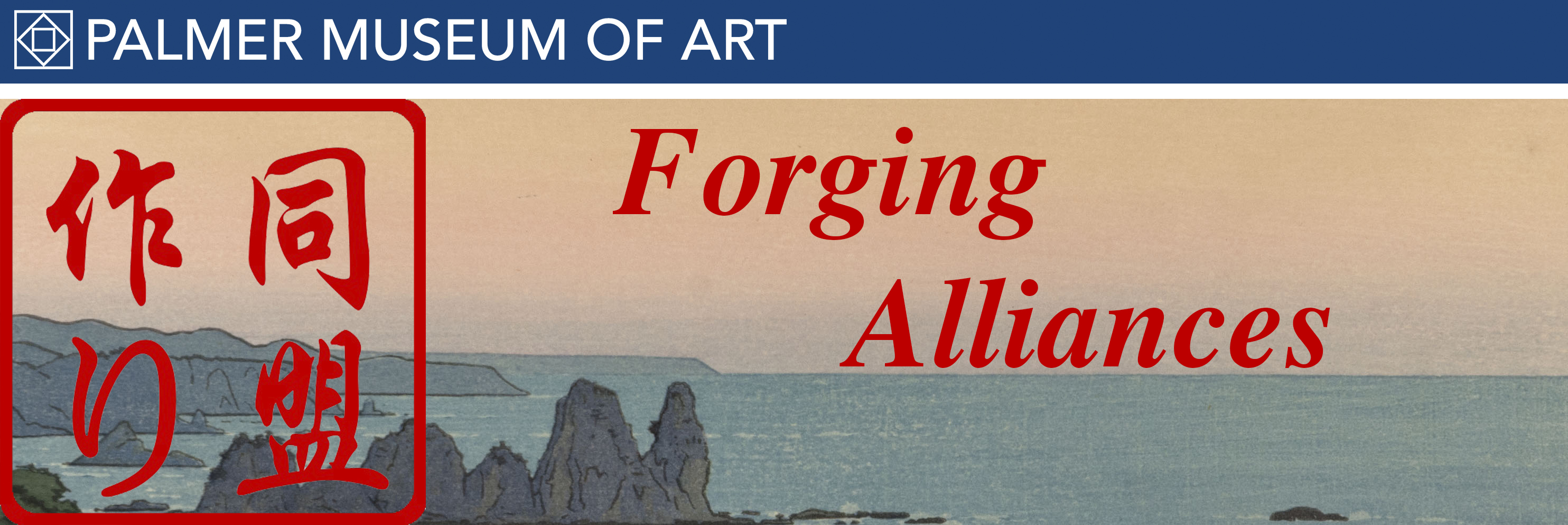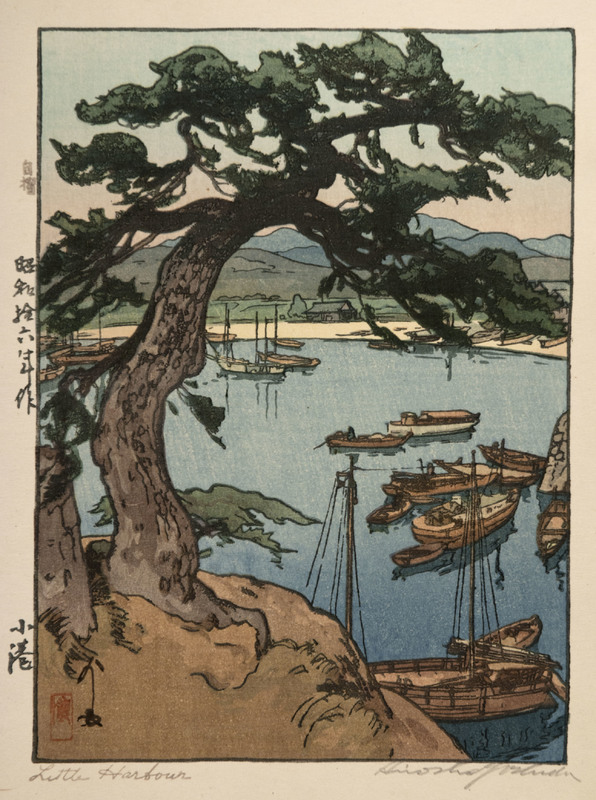Little Harbour
Item
Title
Little Harbour
Creator
Hiroshi YOSHIDA
Japanese, 1876-1950
Japanese, 1876-1950
Date
1941
Materials
Woodblock print
Measurements
10-5/16 x 7-3/4 in. (26.1 x 19.8 cm)
Description
Between 1899 and 1900, Yoshida traveled to America and Europe to study western art and to exhibit and sell his oil paintings of Japan. Within six months of his arrival, a prestigious art exhibition in Boston featured his work. He sketched and painted constantly, capturing the many places he traveled. His work won prizes in Europe and the United States. Yoshida’s success with western buyers diminished in the 1910s and 1920s, as patrons of painting turned to abstraction. The market for Japanese prints remained strong, however, and when Yoshida returned to Japan after World War I, he began designing prints in the shin hanga (new prints) style. Shin hanga combined western conventions of perspective and composition with Japanese conventions of production based on collaboration between artist, carver, printer, and publisher. Yoshida employed and supervised a team of artisan carvers and printers. After he inspected the prints, they received his signature in pencil. This mark appears in Little Harbour.
Yoshida said, "True art is cosmopolitan, and the result therefore of external influences as well as of inherent vitality and life of the different nations." Toward the end of his life, the artist planned a series titled One Hundred Views of the World, but he died before he could finish the project. His artistic legacy lived on through his two sons, Toshi (1911–1995) and Hodaka (1926–1995).
Yoshida said, "True art is cosmopolitan, and the result therefore of external influences as well as of inherent vitality and life of the different nations." Toward the end of his life, the artist planned a series titled One Hundred Views of the World, but he died before he could finish the project. His artistic legacy lived on through his two sons, Toshi (1911–1995) and Hodaka (1926–1995).
Source
Palmer Museum of Art, The Pennsylvania State University, Gift of William E. Harkins.
Identifier
2000.86
Rights
This image is posted publicly for non-profit educational uses, excluding printed publication. Other uses are not permitted.

